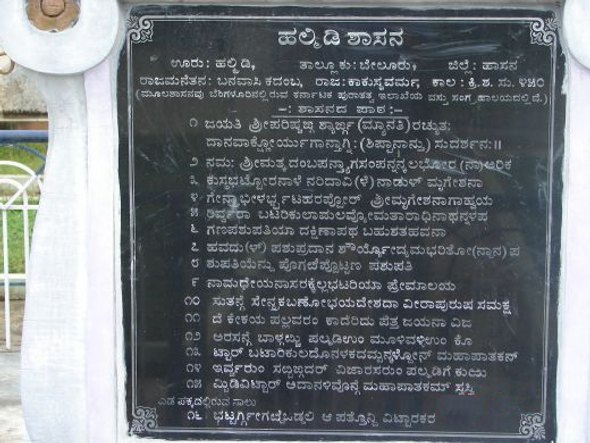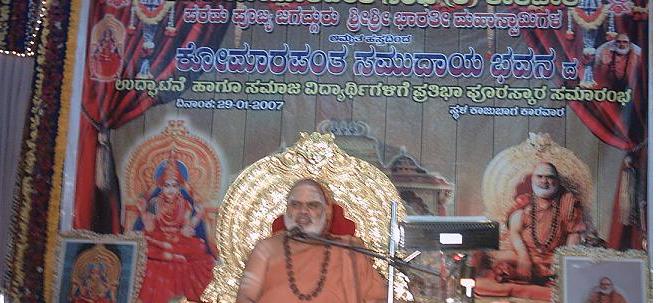Kannada Dialect Survey (KDS) & post KDS
Brahmin’s Kannada (Gulbarga-Karnataka)
Brahmin’s Kannada (Gulbarga-Karnataka)
Non-Brahmin’s Kannada* (Gulbarga- Karnataka)
Non-Brahmin’s Kannada (Bijapur- Karnataka)
Non-Brahmin’s Kannada (Bijapur- Karnataka)
Halakki Kannada* (Kumta- Karnataka)
Shivalli Kannada* (Barkur- Karnataka)
Koraga Language (Udupi- Karnataka)
Havyaka Kannada* (Puttur- Karnataka)
Kuruba Kannada* (Coorg- Karnataka)
Brahmin’s Kannada* (Nanjangud- Karnataka)
Non-Brahmin’s Kannada (Nanjangud- Karnataka)
Non-Brahmin’s Kannada (Nanjangud- Karnataka)
Kannada (Madurai-Tamilnadu)
Kannada (Coimbatore-Tamilnadu)
Tiptur Kannada* (Hasan, Karnataka)
Rabakavi Kannada* (Rabakvi, Jamkhandi, Bijapur, Karnataka)
Non-Brahmin’s Kannada (Bijapur- Karnataka)
Halakki Kannada* (Kumta- Karnataka)
Shivalli Kannada* (Barkur- Karnataka)
Koraga Language (Udupi- Karnataka)
Havyaka Kannada* (Puttur- Karnataka)
Kuruba Kannada* (Coorg- Karnataka)
Brahmin’s Kannada* (Nanjangud- Karnataka)
Non-Brahmin’s Kannada (Nanjangud- Karnataka)
Non-Brahmin’s Kannada (Nanjangud- Karnataka)
Kannada (Madurai-Tamilnadu)
Kannada (Coimbatore-Tamilnadu)
Tiptur Kannada* (Hasan, Karnataka)
Rabakavi Kannada* (Rabakvi, Jamkhandi, Bijapur, Karnataka)
The Kannada language has many about 20 dialects.
Kannada Dialect Survey by Deccan College (Pune).

Halmidi Inscription replica
Kannada is one of the oldest south indian languages with an antiquity of at least 2000 years. However, archaeological evidence would indicate a written tradition for this language of around 1500–1600 years. The initial development of the Kannada language is similar to that of other south indian languages and independent of Sanskrit.
Kannada Dialect Survey by Deccan College (Pune).
|
§ Badagu
or Badaga
|
§ Holiya
§ Urali
§ Barkur
Kannada
|
§ Tiptur
Kannada
§ Dharwad
Kannada
§ North Karnataka Kannada
§ Nanjangud
Kannada (Vakkaliga dialect)
§ Mysore
Kannada[1]
|
|
§
Kodava language also historically
considered as dialect of Kannada language.
History of Kannada

Halmidi Inscription replica
Kannada is one of the oldest south indian languages with an antiquity of at least 2000 years. However, archaeological evidence would indicate a written tradition for this language of around 1500–1600 years. The initial development of the Kannada language is similar to that of other south indian languages and independent of Sanskrit.
Stages of development
By the time Halmidi shasana (stone inscription) Kannada had become an official language. It is said that the halekannnada later developed and deviated into 2 currently coexisting languages Kannada and Telugu.
600AD-1200AD
During this era language underwent a lot of changes as seen from the literary works of great poets of the era viz Pampa, Ranna, Ponna.
1400AD-1600AD
Vijayanagar Empire which is called the Golden era in the history of medieval India saw a lot of development in all literary form of both Kannada and Telugu. During the ruling of the King Krishnadevaraya many wonderful works. Poet Kumaravyasa wrote Mahabharata in Kannada in a unique style called "shatpadi" (six lines is a stanza of the poem).. This era also saw the origin of Dasa sahitya, the Carnatic music. Purandaradasa and Kanakadasa wrote several songs praising lord Krishna. This gave a new dimension to Kannada literature.
With the disintegration of the Vijayanagara empire in the late 16th and early 17th centuries, the centres of Kannada literature moved to the courts of the emerging independent kingdoms, the Kingdom of Mysore and the Keladi Nayakas. Kannada literature flourished for a short while in the court of the neighbouring kingdom of the Nayakas of Keladi whose territory was annexed by Mysore in 1763.
Stone inscriptions
The first written record in the Kannada language is traced to Emperor Ashoka's Brahmagiri edict dated 230 BC. The first example of a full-length Kannada language stone inscription (shilashaasana) containing Brahmi characters with characteristics attributed to those of protokannada in Hale Kannada (Old Kannada) script can be found in the Halmidi inscription, dated c. 450, indicating that Kannada had become an administrative language by this time. Over 30,000 inscriptions written in the Kannada language have been discovered so far. The Chikkamagaluru inscription of 500 AD is another example. Prior to the Halmidi inscription, there is an abundance of inscriptions containing Kannada words, phrases and sentences, proving its antiquity. The 543 AD Badami cliff shilashaasana of Pulakesi I is an example of a Sanskrit inscription in Hale Kannada script.
Sources - http://en.wikipedia.org/wiki/Kannada_dialects and http://en.wikipedia.org/wiki/Halegannada, http://www.deccancollegepune.ac.in/dept_linguistics.asp
By the time Halmidi shasana (stone inscription) Kannada had become an official language. It is said that the halekannnada later developed and deviated into 2 currently coexisting languages Kannada and Telugu.
600AD-1200AD
During this era language underwent a lot of changes as seen from the literary works of great poets of the era viz Pampa, Ranna, Ponna.
1400AD-1600AD
Vijayanagar Empire which is called the Golden era in the history of medieval India saw a lot of development in all literary form of both Kannada and Telugu. During the ruling of the King Krishnadevaraya many wonderful works. Poet Kumaravyasa wrote Mahabharata in Kannada in a unique style called "shatpadi" (six lines is a stanza of the poem).. This era also saw the origin of Dasa sahitya, the Carnatic music. Purandaradasa and Kanakadasa wrote several songs praising lord Krishna. This gave a new dimension to Kannada literature.
With the disintegration of the Vijayanagara empire in the late 16th and early 17th centuries, the centres of Kannada literature moved to the courts of the emerging independent kingdoms, the Kingdom of Mysore and the Keladi Nayakas. Kannada literature flourished for a short while in the court of the neighbouring kingdom of the Nayakas of Keladi whose territory was annexed by Mysore in 1763.
Stone inscriptions
The first written record in the Kannada language is traced to Emperor Ashoka's Brahmagiri edict dated 230 BC. The first example of a full-length Kannada language stone inscription (shilashaasana) containing Brahmi characters with characteristics attributed to those of protokannada in Hale Kannada (Old Kannada) script can be found in the Halmidi inscription, dated c. 450, indicating that Kannada had become an administrative language by this time. Over 30,000 inscriptions written in the Kannada language have been discovered so far. The Chikkamagaluru inscription of 500 AD is another example. Prior to the Halmidi inscription, there is an abundance of inscriptions containing Kannada words, phrases and sentences, proving its antiquity. The 543 AD Badami cliff shilashaasana of Pulakesi I is an example of a Sanskrit inscription in Hale Kannada script.
Sources - http://en.wikipedia.org/wiki/Kannada_dialects and http://en.wikipedia.org/wiki/Halegannada, http://www.deccancollegepune.ac.in/dept_linguistics.asp

No comments:
Post a Comment